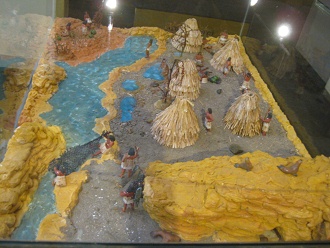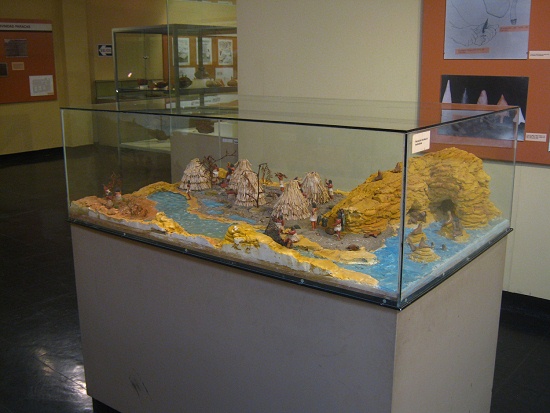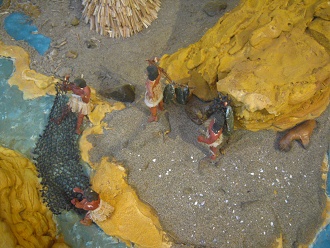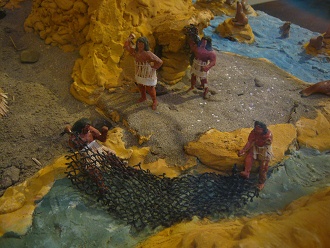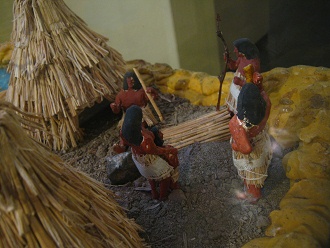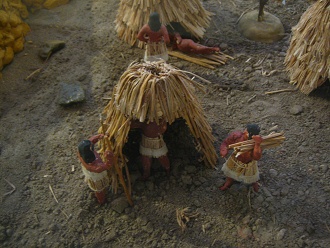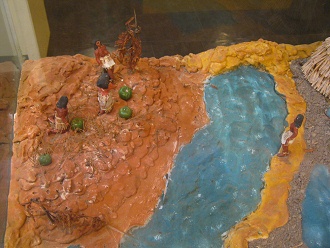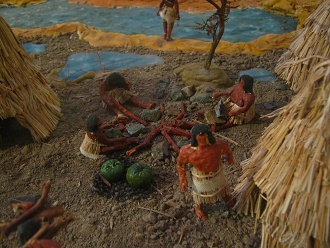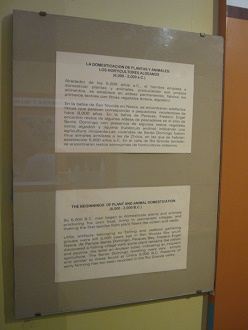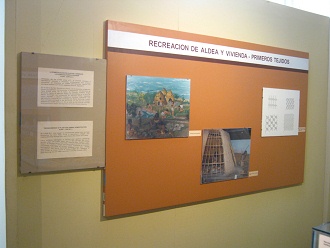
|
The board of Stone
Age, hunters and collectors - beginning of
agriculture (cazadores y recolectores - inicios
de la agricultura)
This epoch of the hunters and collectors is
defined at 16,000 to 6,000 B.C., and the
beginning of agriculture is defined at 6,000 to
2,000 B.C.
[Well, in these times the gods came (they were
extraterrestrials) and tought men how
agriculture and administration function, and
also the domestication of animals].
|

Big board about Stone Age 01
|
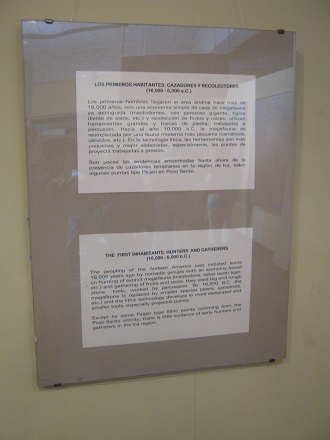
|
Texts
in Spanish and in English about Stone Age
<The first inhabitants:
hunters and gatherers (16,000-6,000 B.C.)
The peopling of the Andean America was
initiated some 18,000 years ago by nomadic
groups with an economy based on hunting of
extinct megafauna (masatodons, saber tooth
tiger, etc.) and gathering of fruits and
roots; they used big and rough stone tools,
worked by percussion. By 10,000 B.C. the
megafauna is replaced by smaller species
(deers, cameloids, etc.) and the lithic
technology develops to more elaborated and
smaller tools, especially projectile points.
Except by some Paijan type lithic points
coming from the Pozo Santo vicinity, there is
little evidence of early hunters and gatherers
in the Ica region.>
|
[The real events were
these ones with extraterrestrial gods -
according to Erich von Däniken and many other
indications:
Extraterrestrials came as gods to
Earth: These were persons with a height of 5
or 6 meters (astronauts or persons with
antennas on their heads etc.), and they tought
to the little human beings (hunters and
gatherers) step by step more and more
agriculture and domestication of animals.
Later these gods are painted on ceramics, are
woven in fabric designs, and are presented in
geoglyphs (line paintings and stone
formations) and in petroglyphs (rock
painting). Unfortunately rock paintings are
not shown in the Regional Museum of Ica. Also
the engraved
stones of Ica are missing completely. By
the events with the extraterrestrial gods
there came up religious cults and adorations,
above all after they had left the Earth].
|
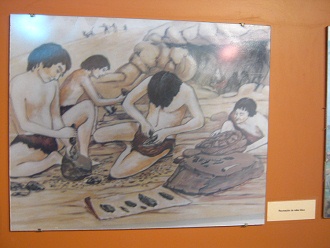
|
Production
of tools
|
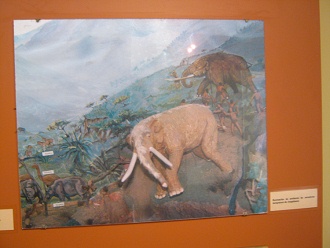
|
Culture
of the hunters, natives hunting trunked animals
like elephants

Text: amusement times in the nature with
partly hunting the rich fauna
|

|
Tool
production in the Stone age of hunters and
gatherers
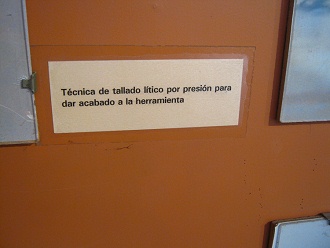
Text: Technique making stone tools, there was
a fine technique with pressure at the forming
tool
|
|
|

|
Life
in caves

Text about the live in caves: The hunters and
gatherers making rest in a cave
|

|
Tool
production

Text about tool production: There was also a
striking technique forming the stones
|
|
|

|
Arrow
heads of Stone Age
Text about the arrow heads: The
arrow heads were found at the archaeological
site of Paiján in the region of Trujillo
[north of Peru]. They are similar to the ones
shown by [the archaeologist] F. Engel who
found the same kind of them at Mastodonte in
the region of Pisco [south of Peru].
|
|
|
















![Text about the arrow heads:
The arrow heads were found at the
archaeological site of Paiján in the region
of Trujillo [north of Peru]. They are
similar to the ones shown by [the
archaeologist] F. Engel who found the same
kind of them at Mastodonte in the region of
Pisco [south of Peru]. Text about the arrow heads: The
arrow heads were found at the archaeological
site of Paiján in the region of Trujillo
[north of Peru]. They are similar to the
ones shown by [the archaeologist] F. Engel
who found the same kind of them at
Mastodonte in the region of Pisco [south of
Peru].](../dd/02-edad-de-piedra-d/014-texto-44pr.jpg)


